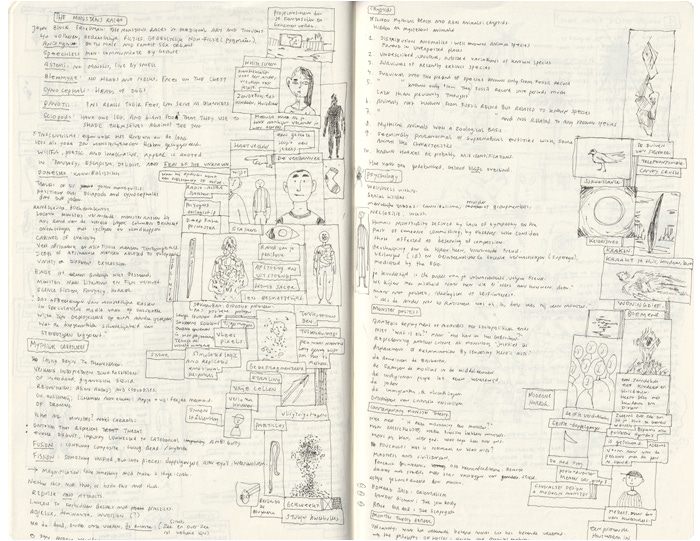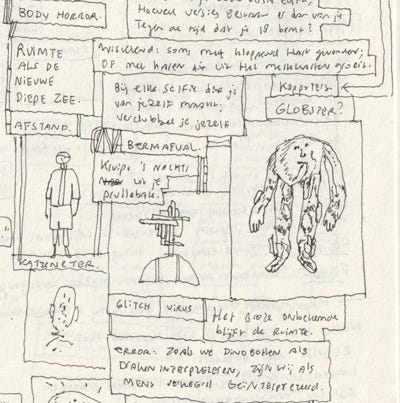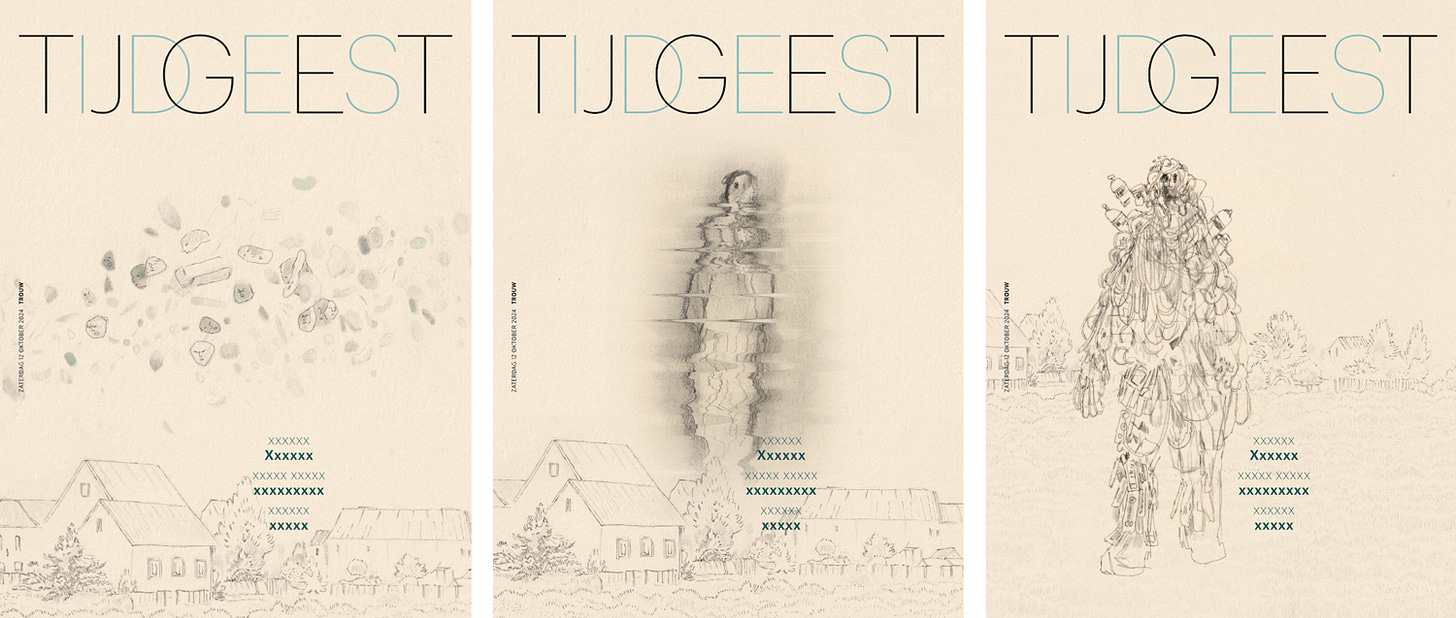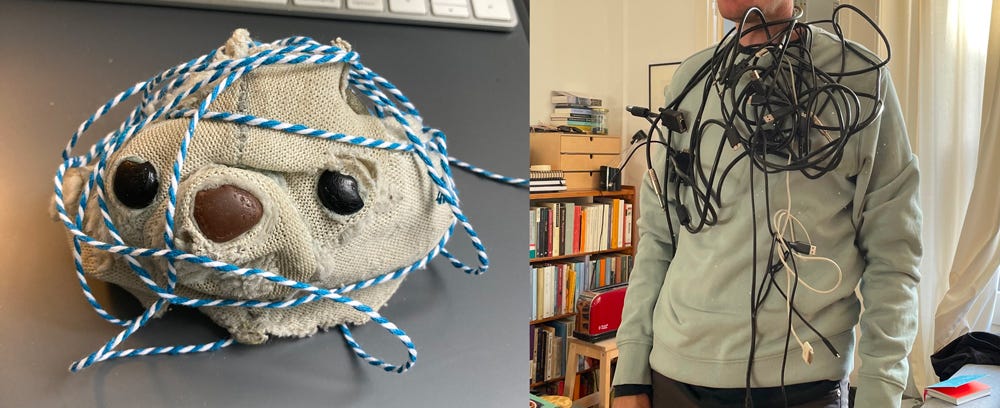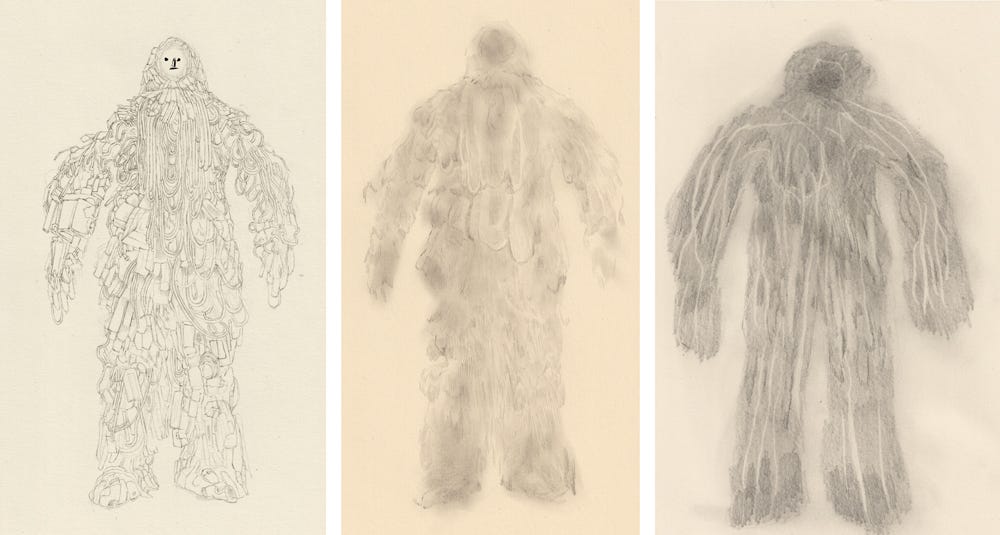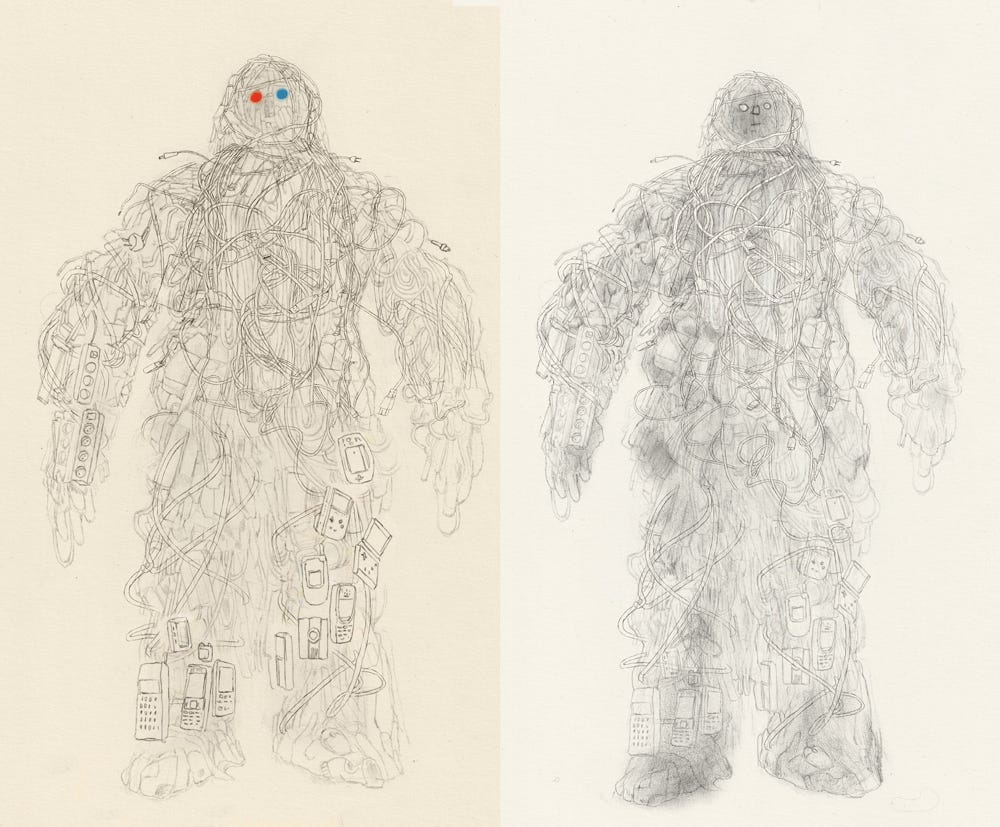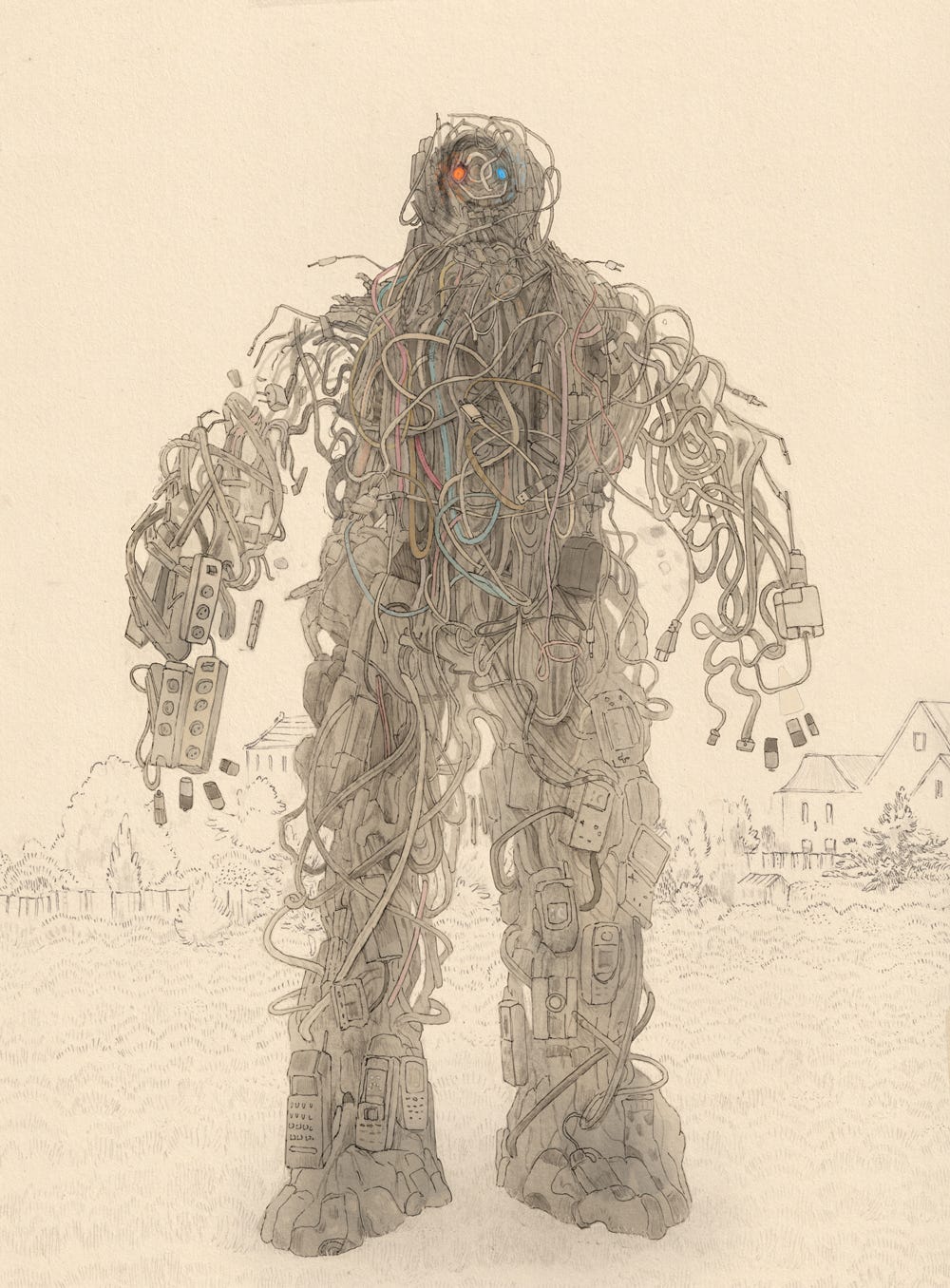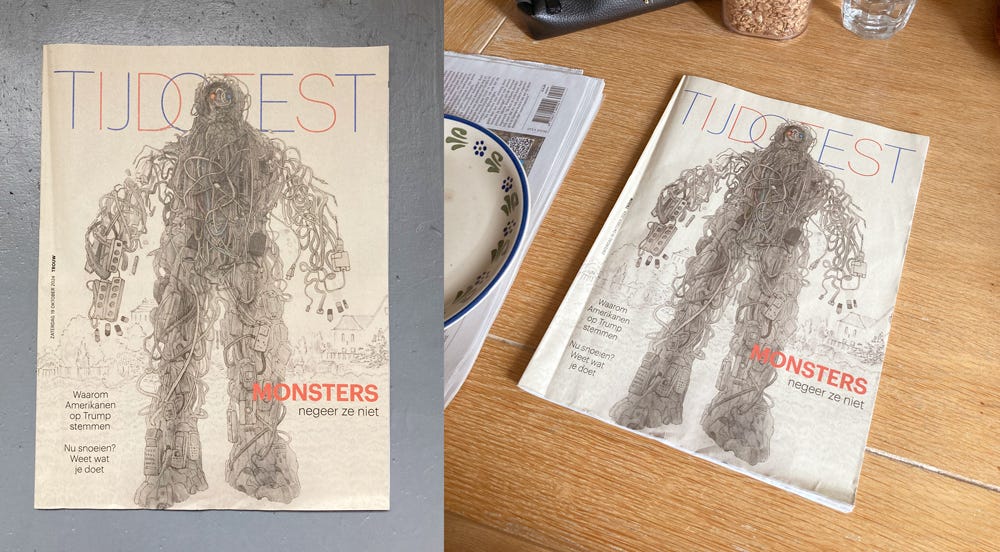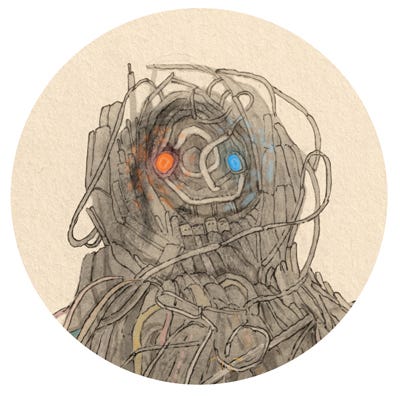Hi, this is my first newsletter! In Open Sketchbook, I show the workflow of a project, from the first line to the final print.
Assignment
Design a modern monster for an essay about monsters in the weekend supplement of the dutch newspaper Trouw.
Sketching
I started with reading 12 about monsters and making notes. The theory is at the left on the pages and initial sketches on the right. I accidentally spent part of the fee for this assignment on books about monsters.
Selection
From my sketchbook I chose three monster ideas that I worked out in a sketch, with an accompanying story.
1. Haters
The flying fragments of everyone who has ever said something unkind online. They sputter insults and chase you to the supermarket or buzz ominously above your bed.
2. Glitch Ghost
A harbinger of system failure. Sometimes you catch a fleeting glimpse of one on your screen, but the bigger its form, the greater the chaos it foretells.
3. Junk Golem
A traditional monster in a modern guise. Inspired by the Japanese Keukegen, a creature born from dust if you don’t clean your home. This new version emerges when you have too many unused items that eventually crawl together, forming a creature - like a golem of junk. Four remote controls form a shinbone, and that box of adapters becomes a ribcage. Sub-creatures can also exist, like a sock-child, made up of all your unmatched socks (the ones whose pairs have vanished in the wash).
Making Reference Material
Sketch three was chosen. Drawing cables is not easy, so I created some reference material. I also photographed my own old phones and Game Boys to incorporate into the design.
Drawing Layers
I made versions with different materials (fineliner, pencil, pastel) on loose sheets, which I digitally placed on top of each other. I am often most satisfied with these versions, because they are so rough.
I was happy with these versions, but they would not hold up well in terms of printing. Drawn too lightly, with details that would disappear on the final type of paper. And the work is not in color, which is necessary for a newspaper. I would like to stay closer to my sketches in the future, but that is an ongoing struggle.
Starting Over
I put the drawings aside. My dad happened to be in Amsterdam and dropped by.
A conversation:
"I don’t know, I’m not really happy with it yet."
"Are you ever truly happy with a drawing?"
In the end, I used the earlier versions to create a new drawing. This one has more floating elements, making it feel more like a monster and less like a human draped in adapters.
Finalizing
I combined all the versions, added color, and a background. The monster was getting lost in the background, so I gave it more "body" with color.
Done!
It is an interesting essay, definitely worth reading if you can read dutch. The text is by Paul Q de Vries and you can find it here. The essay was accompanied by three monsters illustrated by three different illustrators, namely Thé Tjong-Khing, Suzan Hijink and myself. The art direction for this project was by Misja Steinmetz.
If you’re still here, thanks for following along with all the different steps! Normally, there isn’t much time for a newspaper illustration, but this time there was, and the assignment extended to the time reserved for it.3 It was nice to take the time to read, and I made notes that might come in handy for creating children’s books. With AI-generated images, you can skip some of these intermediate steps. But I like those steps - that’s where the joy of creating lies for me (and, sorry to make it sound so heavy, for me the quality of life as well). This process isn’t efficient. But why does it have to be efficient?
Bye!
Stephen T. Asma, On Monsters: An Unnatural History of Our Worst Fears (2009).
Jeffrey Andrew Weinstock, The Monster Theory Reader (2020).
Parkinson’s Law: ‘‘Work expands so as to fill the time available for its completion.’’




